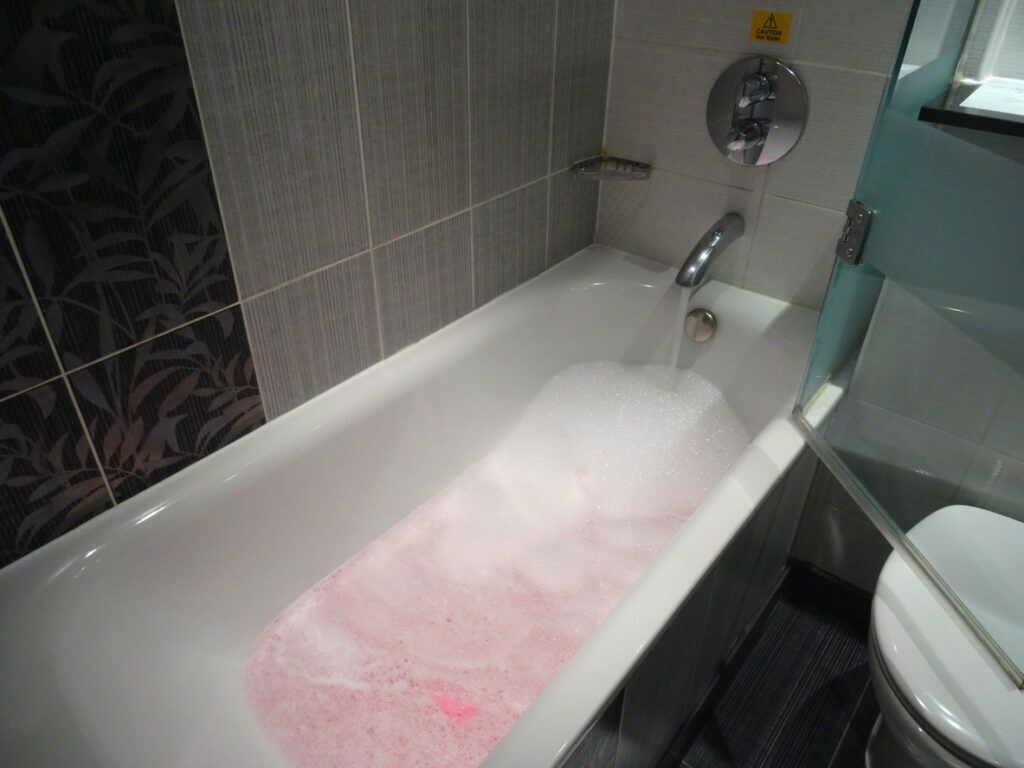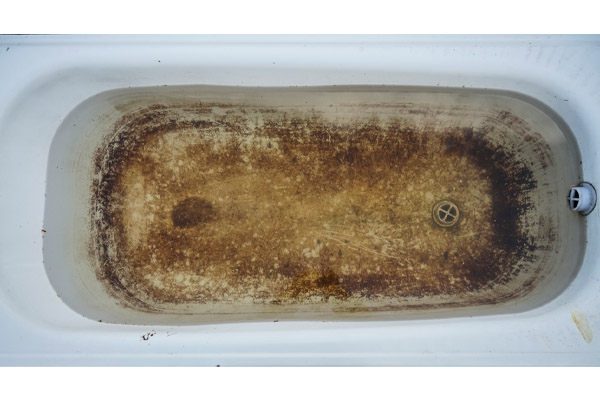In this article below you can discover some worthwhile information and facts concerning Why sewage is coming up through your bathtub.

Sewer backup in the bath tub can be an upsetting and unsanitary trouble for any kind of house owner. Not just is it bothersome, yet it likewise positions serious wellness dangers and indicates underlying concerns with the plumbing system. Comprehending why sewer is turning up with the bathtub is critical for taking proper activity to deal with the trouble efficiently.
Introduction to the Issue
Recognizing the Problem
When sewer draws back up into the bath tub, it's a clear indicator of an issue with the water drainage system. The wastewater that needs to be flowing far from your home is instead discovering its back right into your space, which can lead to considerable damages and carcinogen.
Possible Reasons
Several variables can contribute to sewer back-up in the bathtub. From obstructions in the sewer line to concerns with the plumbing facilities, determining the source is necessary for locating an option.
Usual Reasons for Sewer Backup
Blockages in the Sewer Line
One of the most common reasons for sewer backup is a clog in the drain line. This can take place because of the build-up of particles, grease, or international items in the pipes, stopping correct flow and creating sewer to back up right into your tub.
Tree Root Invasion
Tree origins looking for wetness and nutrients can penetrate sewage system lines through little fractures or joints. Over time, these roots can expand and broaden, causing considerable damage to the pipelines and bring about sewage backup concerns.
Aging Facilities
Older homes might have outdated plumbing systems that are extra vulnerable to rust, splits, and degeneration. As pipes age, they become a lot more vulnerable to leakages and blockages, enhancing the chance of sewage back-up cases.
Heavy Rainfall or Flooding
During periods of heavy rainfall or flooding, the sewer system might end up being overloaded with excess water, creating back-ups and overflows. This can lead to sewage backing up into tubs and other components inside the home.
Health And Wellness Dangers Connected With Sewage Back-up
Contamination of Water Supply
Sewer back-up can pollute the water in your home, presenting a severe health threat to you and your family. Direct exposure to infected water can bring about gastrointestinal concerns, skin infections, and other ailments.
Spread of Condition
Sewer contains dangerous germs, infections, and parasites that can trigger a variety of illness, including hepatitis, cholera, and gastroenteritis. Entering into contact with sewage or polluted surfaces places you in jeopardy of infection.
Mold and mildew Growth
Moisture from sewage backup can create ideal problems for mold development in your house. Mold and mildew spores can intensify breathing problems and create allergic reactions in sensitive people, making timely cleanup important.
Indicators of Sewer Back-up
Foul Odors
Undesirable smells emanating from drains or components, especially in the shower room, might show sewer backup concerns. These odors are frequently strong and persistent, signifying a problem that calls for immediate focus.
Slow Draining Fixtures
Tubs, sinks, and commodes that drain slowly or otherwise in all could be experiencing sewage back-up. If multiple fixtures are affected all at once, it's likely that the problem originates from a common factor, such as the major sewage system line.
Gurgling Noises
Strange gurgling or bubbling noises originating from drains pipes when water is running somewhere else in your house are a measure of air entraped in the plumbing system. This air build-up can arise from sewage backup and must be explored immediately.
Immediate Actions to Take
Turning Off Water
In the event of sewage backup, it's important to switch off the water system to avoid further contamination and damages. Find the main water shutoff valve in your home and shut it off till the problem can be dealt with.
Getting In Touch With a Professional Plumber
Taking care of sewer back-up is not a DIY task. Get in touch with a qualified plumber with experience in dealing with sewage-related concerns to examine the scenario and execute necessary repair work or cleanings.
Avoiding Contact with Infected Water
Until the sewage backup is fixed, avoid contact with infected water to prevent the spread of microorganisms and pathogens. Wear safety gear if you have to remain in the affected location and wash your hands completely later.
Safety nets
Regular Upkeep of Drain Lines
Set up normal evaluations and maintenance of your sewer lines to identify and address possible concerns before they rise right into major problems. This can consist of clearing out debris, evaluating for tree origin breach, and fixing any damaged pipelines.
Installing Backwater Valves
Think about installing backwater shutoffs in your plumbing system to avoid sewer from receding right into your home during durations of heavy rainfall or flooding. These valves immediately close when water draws back up, securing your home from contamination.
Proper Disposal of House Waste
Stay clear of purging anything other than toilet paper and human waste down the bathroom to prevent obstructions and obstructions in the sewer line. Dispose of oil, oil, and various other home chemicals appropriately to decrease the threat of plumbing troubles.
Cleaning Up After Sewer Back-up
Sanitation Procedures
Completely disinfect and sterilize impacted locations after sewer backup to eliminate unsafe germs and protect against mold and mildew development. Usage appropriate cleansing products and protective equipment to ensure safe and effective cleanup.
Remediation of Impacted Areas
Repair any damages to flooring, walls, or components triggered by sewage back-up. Relying on the extent of the damages, you may require to change carpets, drywall, or other materials to restore your home to its pre-loss problem.
Why is Sewage Coming Up Through Your Bathtub?
Reasons You May Have Sewage in Your Bathtub
All the drains in your home lead down different pipes to get to the main sewer line. If you’re seeing sewage in the bathtub, the problem is that the main sewer line is clogged up, which is causing the water running through other drains to be pushed back into other pipes. The problem isn’t the bathtub, but the main line. The sewer line can get backed up by anything that goes down the drain, from food waste, hair and soap particles to jewelry or children’s toys. Tree branches or dirt can also impact the sewer line. If you’re seeing sewage in the bathtub, you have a big problem that usually needs a professional plumber. Trying to fix this problem without the right tools or knowledge can lead to bigger plumbing problems.
Fixing a Clogged Sewage Line
Although you shouldn’t try to fix the clogged sewer line on your own, you may be able to mitigate the issue until you can get a plumber to your home. A plunger isn’t going to help, because it won’t be able to reach the sewage drain to unblock the problem.
Turn Off Water
Find the main shutoff valve to your home to turn off the water. This prevents more water from going down the drain which is only going to flow back into your bathtub.
Snake the Toilet and Drain
Start by using a drain pipe snake to clean out the toilet drain. Rotate the snake clockwise when you push the snake down. As you pull it out, the snake should spin counterclockwise. Follow up by snaking out the bathtub drain. If you are successful, both the toilet and shower will drain efficiently. If you’re not successful, you probably have a bigger problem than your tools and experience can manage.
Contact a Professional Plumber
Pros have the tools to find the source of the problem and the experience to manage big blockages without causing more damage to your pipes. It can save you a lot of stress by contacting the professionals sooner rather than later.
Identify the Early Signs of a Clogged Sewage Line
If you’re gearing up for a holiday family gathering or just want to avoid the hassle of a clogged sewage line in your home, make sure you recognize the signs of a clogged sewer line.
Slow drains are a sign of a sewer line problem. Gurgling drains from any drain in your home indicate that you may have an obstruction in the drains. If your toilet keeps getting clogged, it might be a problem with the sewer line. When you see laundry water or water from the dishwasher in different sinks in the home, it’s an indication that your sewer drain is beginning to get backed up. These symptoms can often be “fixed” temporarily to get through a day or week before you start seeing the same problem. When it comes to plumbing problems, you want to fix the root of the problem instead of muddling through. The clog will not go away on its own.
https://handymanconnection.com/mississauga/articles/why-is-sewage-coming-up-through-your-bathtub/

Do you like reading up on Why sewage is coming up through your bathtub? Make a short review below. We will be happy to hear your insights about this article. We are looking forward that you come back again in the near future. Sharing is caring. One never knows, you will be helping someone out. Thanks so much for your time spent reading it.
Call Today